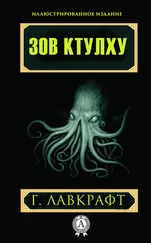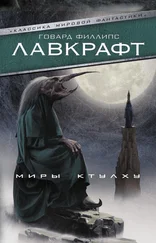The newspapers’ articles, as I have learned, were concerned with cases of panic, mania, and eccentricity during the given period. Professor Angell’s collection was tremendous, and the sources were scattered throughout the globe. Here was a nocturnal suicide in London, where a man had leaped from a window after a shocking cry. Here was a letter to the editor of a newspaper in South America, where a fanatic pretold future from visions he had seen. An article from California described a theosophist colony: people in white robes were preparing for some “glorious fulfiment” which never arrived. Articles from India spoke of serious native unrest toward the end of March 22–23. The west of Ireland, too, was full of wild rumour and legendary stories, and a fantastic painter named Ardois-Bonnot [37] Ardois-Bonnot – Ардуа-Бонно
offered a blasphemous “Dream Landscape” in the Paris spring salon of 1926. The recorded troubles in insane asylums were very numerous as well. But I was then convinced that young Wilcox had known of the older matters mentioned by the professor and had set all of this aside.
II. The Tale of Inspector Legrasse
The older matters which had made the sculptor’s dream and bas-relief so significant to my uncle formed the second half of his long manuscript. Once before, it appears, Professor Angell had seen the hellish outlines of the nameless monstrosity, thought about the unknown hieroglyphics, and heard the ominous syllables which can be written only as “Cthulhu”.
It was in 1908, seventeen years before, when the American Archaeological Society held its annual meeting in St. Louis. [38] St. Louis – Сент-Луис
Professor Angell, due to his authority and attainments, had a prominent part in it. Other people offered him questions for correct answering and problems for expert solution.
There was a middle-aged man who had travelled all the way from New Orleans to get special information unobtainable from any local source. His name was John Raymond Legrasse, and he was an Inspector of Police. He brought the subject of his visit, a grotesque, repulsive, and apparently very ancient stone statuette whose origin was unknown.
Inspector Legrasse had the least interest in archaeology. He was prompted by purely professional considerations. The statuette, idol, fetish, or whatever it was, had been captured [39] had been captured – был конфискован
some months before in the wooded swamps south of New Orleans during a raid on a supposed voodoo meeting. [40] voodoo meeting – сборище приверженцев вуду (вуду – конгломерат анимистических культов, включающий в себя традиционные африканские верования)
And the rites connected with it were so singular and hideous, that the police treated it as a dark cult totally unknown to them, and infinitely more diabolic than even the blackest of the African voodoo circles. Absolutely nothing was discovered of its origin: only erratic and unbelievable tales from the captured members; hence the police wanted to learn something which might help them to place the frightful symbol, and through it understand the cult itself.
Inspector Legrasse was not prepared for the sensation which his offering created. One sight of the thing had been enough to throw the assembled scientists into a state of tense excitement. They crowded around him to gaze at the diminutive strange figure, apparently very old and unknown. Strange school of sculpture had animated this terrible object, yet centuries and even thousands of years seemed recorded in its dim and greenish surface of stone.
The figure, which was finally passed slowly from man to man for close and careful study, was between seven and eight inches in height. It represented a vaguely anthropoid monster, with an octopus-like head, whose face was a mass of feelers, a scaly, rubbery-looking body, prodigious claws on hind and fore feet, and long, narrow wings behind. This thing, which was an embodiment of a fearsome and unnatural malignancy, squatted evilly on a rectangular block or pedestal covered with undecipherable characters. The tips of the wings touched the back edge of the block, the seat occupied the centre, while the long, curved claws of the hind legs gripped the front edge and extended toward the bottom of the pedestal. The cephalopod head [41] cephalopod head – осьминожья голова
was bent forward, so that the ends of the facial feelers brushed the backs of huge fore paws which clasped the elevated knees. The creature looked abnormally life-like and fearful because its source was totally unknown. Its vast, awesome, and incalculable age was unmistakable; but it was not connected to any known type of art belonging to civilisation’s youth – or indeed to any other time. Even its material was a mystery; for the soapy, greenish-black stone with its golden or iridescent flecks and striations resembled nothing familiar [42] resembled nothing familiar – не напоминал ничего из известного
to geology or mineralogy. The characters along the base were totally unknown; and nobody could form the least notion of even their remotest linguistic kinship. They, like the subject and material, belonged to something horribly remote and distinct from mankind as we know it.
And yet, as the members shook their heads and confessed defeat at the Inspector’s problem, there was one man in that gathering who recognized bizarre familiarity in the monstrous shape and writing. This person was the late William Channing Webb, [43] the late William Channing Webb – ныне покойный Уильям Ченнинг Уэбб
Professor of Anthropology in Princeton University, and a famous explorer.
Professor Webb had been engaged, forty-eight years before, in a tour of Greenland and Iceland in search of some Runic inscriptions. On the West Greenland coast he had met a singular tribe or cult of degenerate Esquimaux [44] degenerate Esquimaux – вымирающие эскимосы
whose religion, a curious form of devil-worship, frightened him with its deliberate bloodthirstiness [45] bloodthirstiness – кровожадность
and repulsiveness. It was a faith of which other Esquimaux knew little, and which they mentioned only with shudders, saying that it had come down from horribly ancient ages before the world was made. Besides nameless rites and human sacrifices there were certain queer hereditary rituals addressed to a supreme elder devil or tornasuk; [46] addressed to a supreme elder devil or tornasuk – посвящённые верховному дьяволу, или «торнасуку»
and of this Professor Webb had taken a careful phonetic copy from an aged angekok or wizard-priest, [47] had taken a careful phonetic copy from an aged angekok or wizard-priest – тщательно записал из уст старого целителя, или шамана
expressing the sounds in Roman letters as best he knew how. The most important thing was the fetish, around which they danced when the aurora leaped high [48] the aurora leaped high – занималась утренняя заря
over the ice cliffs. It was, the professor stated, a very crude bas-relief of stone, comprising a hideous picture and some cryptic writing. And it was a rough parallel in all essential features of the bestial thing now lying before the meeting.
Читать дальше
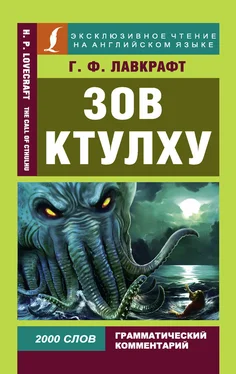
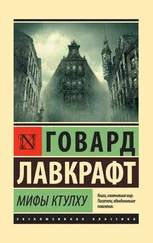

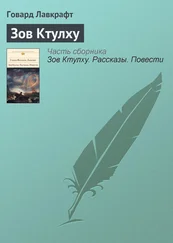

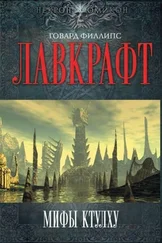
![Говард Лавкрафт - Сны Ктулху [сборник litres с оптимизированной обложкой]](/books/414307/govard-lavkraft-sny-ktulhu-sbornik-litres-s-optim-thumb.webp)
![Говард Лавкрафт - Сны Ктулху [сборник litres]](/books/414330/govard-lavkraft-sny-ktulhu-sbornik-litres-thumb.webp)
![Говард Лавкрафт - Миры Ктулху [сборник, litres]](/books/425677/govard-lavkraft-miry-ktulhu-sbornik-litres-thumb.webp)

